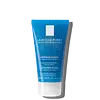What's inside
What's inside
 Key Ingredients
Key Ingredients

 Benefits
Benefits

 Concerns
Concerns

 Ingredients Side-by-side
Ingredients Side-by-side

Water
Skin ConditioningButylene Glycol
HumectantGlycerin
HumectantHydroxyethylpiperazine Ethane Sulfonic Acid
BufferingPerlite
AbsorbentAmmonium Polyacryloyldimethyl Taurate
Emulsion StabilisingSodium Hydroxide
BufferingPumice
AbrasivePoloxamer 184
EmulsifyingDisodium EDTA
Caprylyl Glycol
EmollientXanthan Gum
EmulsifyingT-Butyl Alcohol
PerfumingPolyquaternium-47
Skin ConditioningBHT
AntioxidantSodium Benzoate
MaskingPhenoxyethanol
PreservativeMyrtrimonium Bromide
PreservativeParfum
MaskingWater, Butylene Glycol, Glycerin, Hydroxyethylpiperazine Ethane Sulfonic Acid, Perlite, Ammonium Polyacryloyldimethyl Taurate, Sodium Hydroxide, Pumice, Poloxamer 184, Disodium EDTA, Caprylyl Glycol, Xanthan Gum, T-Butyl Alcohol, Polyquaternium-47, BHT, Sodium Benzoate, Phenoxyethanol, Myrtrimonium Bromide, Parfum
Salicylic Acid 1%
MaskingKaolin
AbrasiveGlycerin
HumectantButylene Glycol
HumectantMagnesium Aluminum Silicate
AbsorbentGlyceryl Stearate
EmollientPEG-100 Stearate
Silica
AbrasiveSodium Lauroyl Sarcosinate
CleansingAllyl Methacrylates Crosspolymer
Emulsion StabilisingGentiana Lutea Root Extract
Skin ConditioningLaminaria Saccharina Extract
Skin ProtectingSucrose
HumectantAcetyl Glucosamine
Skin ConditioningCaprylyl Glycol
Emollient1,2-Hexanediol
Skin ConditioningTocopheryl Acetate
AntioxidantSodium Hydroxide
BufferingXanthan Gum
EmulsifyingDisodium EDTA
Phenoxyethanol
PreservativeCI 77891
Cosmetic ColorantCI 42090
Cosmetic ColorantCI 19140
Cosmetic ColorantSalicylic Acid 1%, Kaolin, Glycerin, Butylene Glycol, Magnesium Aluminum Silicate, Glyceryl Stearate, PEG-100 Stearate, Silica, Sodium Lauroyl Sarcosinate, Allyl Methacrylates Crosspolymer, Gentiana Lutea Root Extract, Laminaria Saccharina Extract, Sucrose, Acetyl Glucosamine, Caprylyl Glycol, 1,2-Hexanediol, Tocopheryl Acetate, Sodium Hydroxide, Xanthan Gum, Disodium EDTA, Phenoxyethanol, CI 77891, CI 42090, CI 19140
Ingredients Explained
These ingredients are found in both products.
Ingredients higher up in an ingredient list are typically present in a larger amount.
Butylene Glycol (or BG) is used within cosmetic products for a few different reasons:
Overall, Butylene Glycol is a safe and well-rounded ingredient that works well with other ingredients.
Though this ingredient works well with most skin types, some people with sensitive skin may experience a reaction such as allergic rashes, closed comedones, or itchiness.
Learn more about Butylene GlycolCaprylyl Glycol is a humectant and emollient, meaning it attracts and preserves moisture.
It is a common ingredient in many products, especially those designed to hydrate skin. The primary benefits are retaining moisture, skin softening, and promoting a healthy skin barrier.
Though Caprylyl Glycol is an alcohol derived from fatty acids, it is not the kind that can dry out skin.
This ingredient is also used as a preservative to extend the life of products. It has slight antimicrobial properties.
Learn more about Caprylyl GlycolDisodium EDTA plays a role in making products more stable by aiding other preservatives.
It is a chelating agent, meaning it neutralizes metal ions that may be found in a product.
Disodium EDTA is a salt of edetic acid and is found to be safe in cosmetic ingredients.
Learn more about Disodium EDTAGlycerin is already naturally found in your skin. It helps moisturize and protect your skin.
A study from 2016 found glycerin to be more effective as a humectant than AHAs and hyaluronic acid.
As a humectant, it helps the skin stay hydrated by pulling moisture to your skin. The low molecular weight of glycerin allows it to pull moisture into the deeper layers of your skin.
Hydrated skin improves your skin barrier; Your skin barrier helps protect against irritants and bacteria.
Glycerin has also been found to have antimicrobial and antiviral properties. Due to these properties, glycerin is often used in wound and burn treatments.
In cosmetics, glycerin is usually derived from plants such as soybean or palm. However, it can also be sourced from animals, such as tallow or animal fat.
This ingredient is organic, colorless, odorless, and non-toxic.
Glycerin is the name for this ingredient in American English. British English uses Glycerol/Glycerine.
Learn more about GlycerinPhenoxyethanol is a preservative that has germicide, antimicrobial, and aromatic properties. Studies show that phenoxyethanol can prevent microbial growth. By itself, it has a scent that is similar to that of a rose.
It's often used in formulations along with Caprylyl Glycol to preserve the shelf life of products.
Sodium Hydroxide is also known as lye or caustic soda. It is used to adjust the pH of products; many ingredients require a specific pH to be effective.
In small amounts, sodium hydroxide is considered safe to use. However, large amounts may cause chemical burns due to its high alkaline.
Your skin has a natural pH and acid mantle. This acid mantle helps prevent harmful bacteria from breaking through. The acid mantle also helps keep your skin hydrated.
"Alkaline" refers to a high pH level. A low pH level would be considered acidic.
Learn more about Sodium HydroxideXanthan gum is used as a stabilizer and thickener within cosmetic products. It helps give products a sticky, thick feeling - preventing them from being too runny.
On the technical side of things, xanthan gum is a polysaccharide - a combination consisting of multiple sugar molecules bonded together.
Xanthan gum is a pretty common and great ingredient. It is a natural, non-toxic, non-irritating ingredient that is also commonly used in food products.
Learn more about Xanthan Gum